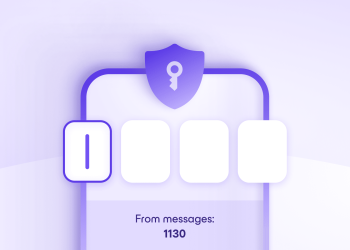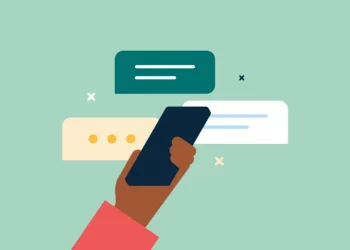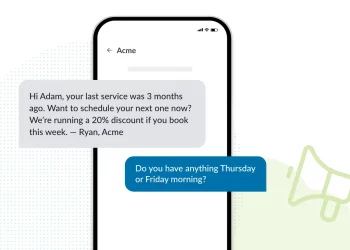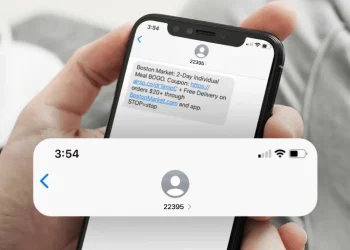In today’s digital age, text messaging has become a dominant form of communication. It’s quick, convenient, and often the preferred method of staying in touch with friends and colleagues. One finds a curious and ever-evolving language within texting: text abbreviations and acronyms. These shortened forms of words and phrases have become an integral part of our everyday texting conversations. This article will explore text abbreviations, exploring when and how to use them effectively.
The Purpose of Abbreviations in Texting
Text abbreviations serve several essential purposes in the world of digital communication:
- Efficiency: Abbreviations save time and space when typing messages, making it easier to convey information quickly. In a fast-paced world, this efficiency is highly valued.
- Informality: Text abbreviations add a casual and conversational tone to messages. They’re often used when chatting with friends family, or in informal group chats.
- Expressiveness: Some abbreviations and acronyms can convey emotions or reactions more succinctly than words alone. For instance, “LOL” (Laugh Out Loud) or “OMG” (Oh My God) express amusement or surprise effectively.
Common Texting Abbreviations
To get a sense of the language of text abbreviations, let’s explore some of the most common ones:
- LOL: Laugh Out Loud
- BRB: Be Right Back
- IDK: I Don’t Know
- OMG: Oh My God
- TTYL: Talk To You Later
- BTW: By The Way
- ROFL: Rolling On the Floor, Laughing
- BFF: Best Friends Forever
- SMH: Shaking My Head
- YOLO: You Only Live Once
When and How to Use Text Abbreviations
The key to using text abbreviations effectively is understanding when and how to deploy them:
1. Appropriate Contexts:
Text abbreviations are most appropriate in casual conversations with friends and family. They add a friendly and relaxed tone. However, they should be avoided in formal or professional communications, where a more formal language is expected.
2. Audience Consideration:
Always consider your audience when using text abbreviations. If you’re unsure whether someone knows a particular abbreviation, it’s better to err on caution and use the full phrase.
3. Avoid Overuse:
While abbreviations can be fun and efficient, avoid overusing them. Overreliance on abbreviations can make your messages appear lazy or lacking in substance.
4. Clarity Is Key:
Ensure your message remains clear even when using abbreviations. Misunderstandings can arise when an abbreviation is unfamiliar or misinterpreted.
5. Emojis and Emoticons:
Emojis and emoticons can complement text abbreviations by adding emotional context to messages. For instance, pairing “LOL” with a laughing emoji strengthens the expression of amusement.
Impact of Texting Abbreviations on Communication
While text abbreviations can enhance digital communication, they can also impact it negatively:
1. Misinterpretation:
Overusing or misusing abbreviations can lead to misinterpretation, as the recipient may not understand the intended meaning.
2. Loss of Nuance:
In some cases, using abbreviations can lead to a loss of nuance in a conversation. They may not effectively convey a message’s depth of emotion or seriousness.
The Importance of Text Slang
Text slang, another term for text abbreviations, refers to the informal language used in digital communication. It adds a layer of informality and expressiveness to conversations. Text slang has become integral to online interactions, particularly among younger generations. Familiarizing yourself with common text slang words will enable you to understand better and participate in casual digital conversations.
Text Abbreviations vs. Acronyms
While text abbreviations are shortened forms of words or phrases, acronyms are formed by taking the initial letters of a series of words and combining them to create a new word. Acronyms like LOL (laugh out loud) or BRB (be right back) are widely used in texting and online communication. Understanding the distinction between abbreviations and acronyms will help you decipher and utilize these linguistic elements effectively.
Building Your Text Abbreviations Vocabulary
To start with text abbreviations, familiarize yourself with standard abbreviations and acronyms. Here is a list of frequently used text abbreviations:
– LOL: Laugh out loud
– BRB: Be right back
– OMG: Oh my God
– FYI: For your information
– IDK: I don’t know
– ASAP: As soon as possible
– TTYL: Talk to you later
– BTW: By the way
– IMO: In my opinion
– ROFL: Rolling on the floor laughing
Common Abbreviations for Texting
In addition to the general text abbreviations, specific abbreviations are commonly used in texting. Some examples include:
– 2moro: Tomorrow
– B4: Before
– L8r: Later
– GR8: Great
– BFF: Best friends forever
– CU: See you
– OMG: Oh my gosh
– XOXO: Hugs and kisses
– TMI: Too much information
– J/K: Just kidding
Cool Acronyms and Slang
As language continues to evolve, new acronyms and slang emerge regularly. Keeping up with the latest cool acronyms and slang words will help you stay current and connected. Online resources and social media platforms can be valuable sources to explore and learn new abbreviations and acronyms.
Abbreviations with Meaning
Many text abbreviations carry specific meanings commonly understood in the digital communication sphere. Here are some examples:
– SMH: Shaking my head
– AFK: Away from the keyboard
– FOMO: Fear of missing out
– IRL: In real life
– NSFW: Not safe for work
– TBT: Throwback Thursday
– YOLO: You only live once
– FOMO: Fear of missing out
– TBH: To be honest
– ILY: I love you
Etiquette and Caution with Text Abbreviations
While text abbreviations can enhance communication, using them appropriately and cautiously is essential. Here are some key points to remember:
– Consider your audience and the context of the conversation. It’s best to limit text abbreviations in more formal or professional settings.
– Avoid excessive use of abbreviations, as it may hinder comprehension and come across as lazy or unprofessional.
– Be mindful of the platform you’re using. Different social media platforms and messaging apps have varying levels of formality and acceptance of abbreviations.
– Use proper punctuation and grammar whenever possible, even when using abbreviations. This helps maintain clarity and professionalism in your digital communication.
Resources for Text Abbreviations
Several resources are available online to expand your knowledge and keep up with the ever-growing list of text abbreviations and acronyms. These resources provide comprehensive lists and explanations of various abbreviations used in digital communication. Here are a few recommended websites:
– Acronym Finder (www.acronymfinder.com): A reliable resource that allows you to search for acronyms and abbreviations across different fields and industries.
– Urban Dictionary (www.urbandictionary.com): An online slang dictionary where you can find definitions and explanations of popular text abbreviations and slang words.
– NetLingo (www.netlingo.com): A website dedicated to the internet and text language, providing many abbreviations, acronyms, and other digital communication terms.
– Emojipedia (www.emojipedia.org): While not solely focused on abbreviations, Emojipedia offers a comprehensive guide to emojis, often used with text abbreviations to convey emotions and messages more vividly.
FAQ’s about Text Abbreviations
Q: Are text abbreviations limited to texting only?
A: While text abbreviations are commonly used in texting, they have also permeated other forms of digital communication, such as social media platforms, instant messaging apps, and online forums.
Q: Is it necessary to use text abbreviations in all digital conversations?
A: No, using text abbreviations in every conversation is unnecessary. The appropriateness of their usage depends on the context, audience, and platform. Using standard language and limiting abbreviations in more formal or professional settings is advisable.
Q: How can I keep up with the constantly evolving world of text abbreviations?
A: Staying updated can be achieved through active participation in digital communities, observing how others use abbreviations, and referring to online resources and dictionaries dedicated to text abbreviations and acronyms.
Q: Are there any risks or challenges associated with using text abbreviations?
A: While text abbreviations can be convenient, there are a few potential challenges. Overusing abbreviations or relying solely on them may lead to misunderstandings or misinterpretations. Some abbreviations may have multiple meanings or be context-dependent, so using them judiciously is essential.
Q: How can I ensure effective communication while using text abbreviations?
A: To ensure effective communication, it’s crucial to consider your audience, the context of the conversation, and the level of familiarity with abbreviations. When in doubt, it’s best to clarify or avoid using abbreviations to maintain clarity and avoid confusion.
Evolution of Text Abbreviations
Texting abbreviations have evolved over time as digital communication has changed. In the early days of texting, character limits, and limited keyboards necessitated abbreviations. Today, with more advanced smartphones and communication platforms, text length has more flexibility, but abbreviations remain popular due to their efficiency and informality.
Conclusion
Text abbreviations and acronyms have become a ubiquitous part of our digital conversations. When used thoughtfully and in the appropriate context, they can enhance the efficiency and informality of texting. However, it’s crucial to remember that not all situations call for abbreviations. Understanding your audience and the context of your communication is essential to effectively navigate the world of text abbreviations and ensure that your messages are clear and well-received. So, feel free to sprinkle some “LOLs” and “BRBs” in your casual text messages, but keep it professional and clear in formal communications. Happy texting!














